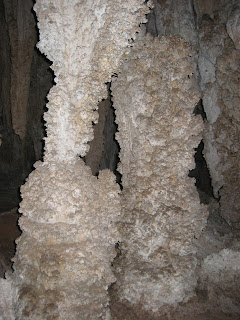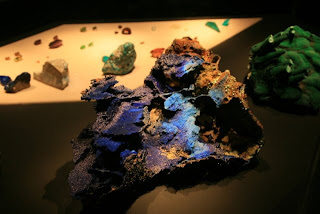.jpg)
Saguaro National Park consists of two districts: Saguaro West-Tuscon Mountain District and Saguaro East-Rincon Mountain District. The two areas are separated by the city of Tucson, are located about 30 miles apart, and together preserve over 91,000 acres of the Sonoran Desert, including the park's namesake, the Saguaro Cactus.
The Sagauro Cactus is the historic symbol of the American Southwest and is King of the Sonoran Desert. Pronounced sa-war-oh, the Cactus has been protected within the park since 1933.
The Sonoran Desert is one of the hottest and driest regions on the continent. Summer midday temps commonly climb above 100 degrees Farenheit and the region receives fewer than 12" inches of rainfall in a typical year. Between summer and winter rainy seasons it's not unusual for months to pass without a drop of rain.
.jpg)
The Saguaro flowers from late April through June. Creamy white, and big and bold, each blossom opens after sunset in the cool of the night. By the next afternoon it has wilted and the brief period of bloom has ended. The spectacle is repeated night after night for about four weeks and as many as 100 flowers will have bloomed on each Saguaro.
Saguaro fruit ripens in June and July. The sugary pulp contains as many as 2,000 seeds. The very few Saguaro may live well over 200 years and reach over 50 feet in height. A one-inch tall Saguaro is between 5 and 10 years old; at 6 feet is may be 35 to 70 years of age; between 50 and 100 years of age it begins to grow branches. Old age and death occurs between 150 to 200 years.
.jpg)
The Saguaro is renowned for the odd shapes it assumes, inspiring fanciful imaginings. I thought this one looked like an Indian in ceremonial dress displaying a pose or dancing. It's fascinating how everyone sees something different.
.jpg)
We were driving through the park on an unpaved route and happened upon this Rattlesnake crossing the road. Just a remindere you need to be oooh-so-careful when exploring the park. All kinds of wildlife reside here and we must remember we're guests in their home - and not the other way around.
More photos of the park are on Flickr. Click on the link at the top of the page to browse the collection.

.jpg)
.jpg)
.jpg)
.jpg)
.jpg)
.jpg)
.jpg)
.jpg)
.jpg)
.jpg)
.jpg)
.jpg)
.jpg)
.jpg)
.jpg)
.jpg)
.jpg)
